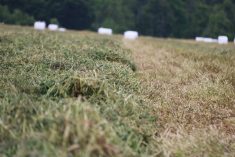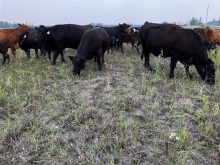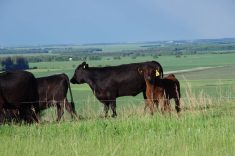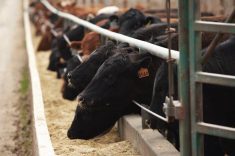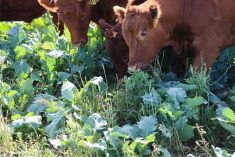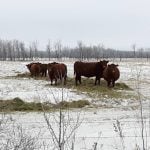Manitoba’s beef producers are calling for better insurance for extended grazing.
Wildlife feed loss sparked a string of resolutions during the Manitoba Beef Producers annual general meeting, held in Brandon February 7. Producers from multiple districts argued that insurance should cover feed that is left in the field if it is part of an extended grazing plan.
Why it matters: Farmers are encouraged to spread out their grazing season, both to cut their own costs and as a benefit to the environment, but farmers say that current insurance leaves a gap when it comes to those strategies.
Read Also

Beekeepers want financial protection against tropi mite
What happens to beekeepers if the deadly tropi mite reaches Canada? Discover why farmers want robust compensation to protect pollination.
Brian Lemon, Manitoba Beef Producers general manager, said the province is encouraging practices like extended grazing, cover crops, or rotational grazing, all said to contribute to sustainability or feed resiliency or efficiency, but noted that insurance programs have not changed to match.
“It’s a case where we’ve got a number of practices that are being encouraged for a number of different reasons,” he said. “In some cases, it might be because of being able to extend the grazing periods. It might be because of being better for the environment. It might be for any number of reasons.
“What we’re asking is that the province make sure that its insurance programs aren’t getting in the way of encouraging that,” he said.

“Those are the kinds of innovative practices that are going to move our industry forward. It seems a little bit odd that on one hand we would encourage those practices and, at the same time say, ‘Oh, because you’re implementing those practices, you don’t have the same insurance as other people have.’”
The Manitoba Beef Producers hopes to make in-field baled hay, as well as any other type of feed not taken in for the winter, eligible for MASC’s Wildlife Damage Compensation Program.
Provincial officials have taken a generally positive tone when it comes to extended grazing. Greg Fedak, farm management specialist with Manitoba Agriculture, has noted that extended grazing comes below feedlot costs, according to the 2019 beef cow-calf cost-of-production projections. Fedak presented the data during a producers’ workshop in western Manitoba in late 2018. Extended grazing, including bale grazing or swath grazing, took an estimated 84 cents per head per day to feed, compared to $2.14 a day for regular winter feeding.
More indirectly, Ag Action Manitoba has set aside funding for projects such as cover crops, which may be slated for grazing into the fall.
MBP members showed wide support for expansions to the wildlife insurance program. Ramona Blyth, a producer near MacGregor and outgoing MBP board member, argued much the same as Lemon. Blyth stood up in Brandon Feb. 7, arguing that producers looking to embrace such management strategies should be able to protect the feed they’ve left in the field.
David Van Deynze, MASC vice-president of innovation and product support, says they are aware of the issue and that the beef producers have been very clear on changes they would like to see in the program.
MASC expects such a change would make a significant impact to its budget however, Van Deynze added. They have spoken with the province to see if there is enough funding for such a change.
“At this point, it just hasn’t materialized,” Van Deynze said. “It’s still something that is on our radar and we will continue to work towards and, I guess, I would suggest when the time is right, hopefully something will occur.”
As well as funding — the biggest challenge to an expanded wildlife program, Van Deynze said — MASC says it would also need to work out smaller issues such as loss data and producer behaviour prior to livestock entering that field.
“We would have to understand exactly the process,” he said. “We would need to see some losses before livestock have any access to (the field) and there are still some mitigation strategies around producers trying to prevent losses somewhat on their own before they qualify for compensation, so we may need to work around some of those things as well.”
Van Deynze suggested that those mitigation measures might include timing of harvest, ease of access to the field or choice of field used for extended grazing.
Blackbirds also earned their own round of proposed changes with MBP. Along with compensation for field-exposed feed, producers called for MBP to lobby government and get blackbirds added to MASC’s wildlife compensation program.
That is also something that is on MASC’s radar, according to Van Deynze.
The issue may face hurdles, however, Van Deynze said, since the program typically compensates farmers for losses from protected species.
“Part of the challenge too is that migratory birds will land in your field and move across your field and wipe it out, whereas the blackbirds will kind of swoop in and take a bit here and a bit there and a bit there, so there are challenges on (MASC’s) part in terms of being able to actually do the proper assessment of your loss,” Lemon acknowledged.
Lemon said he is pleased with MASC’s willingness to start talks on farmer needs, and that the agency has been generally receptive to meet with his group.




